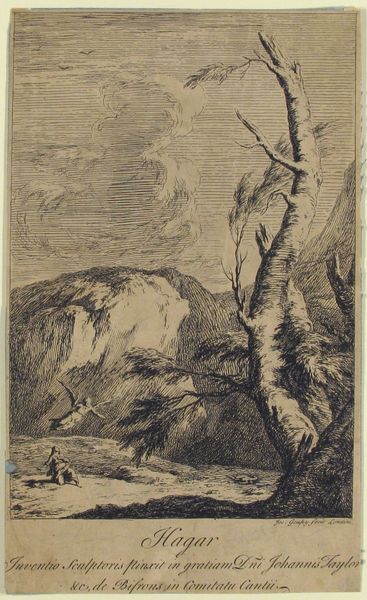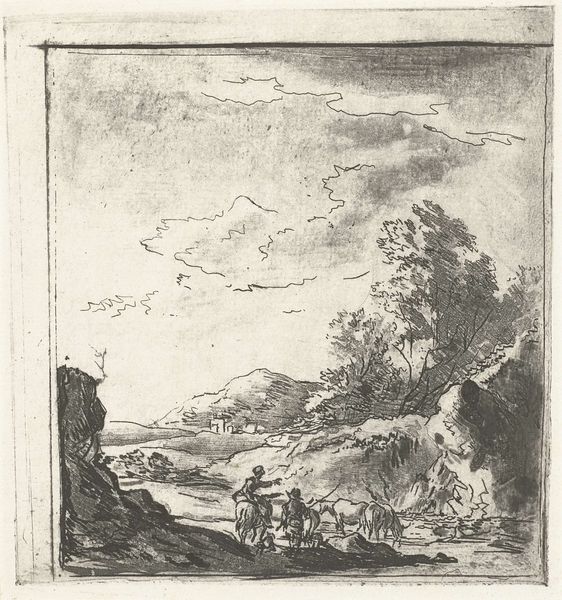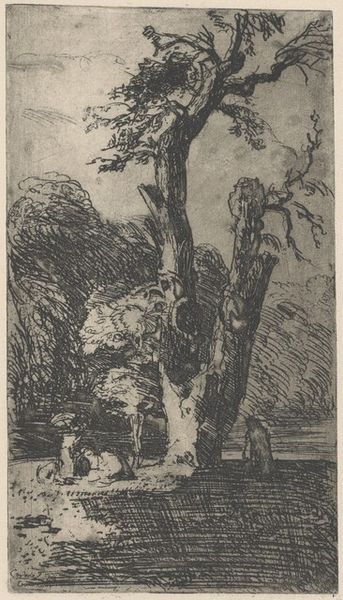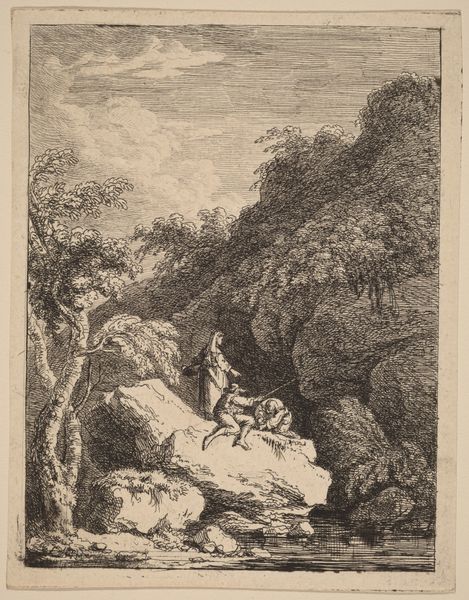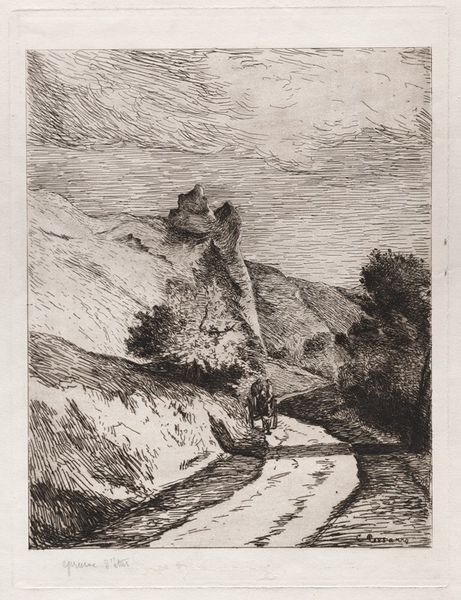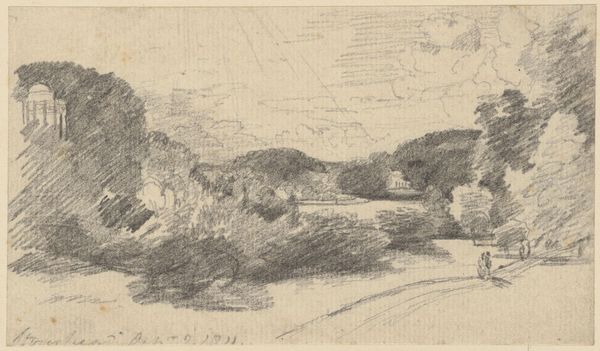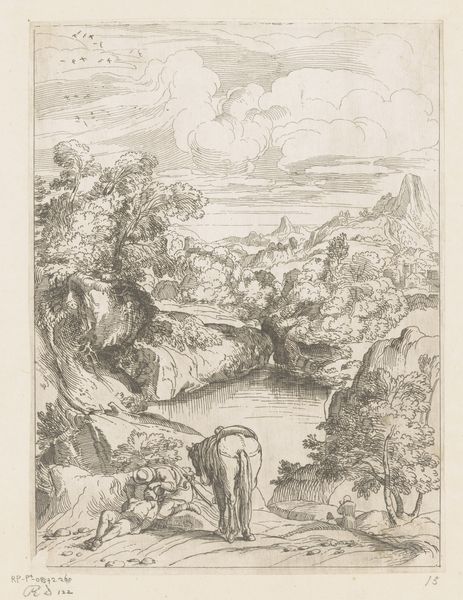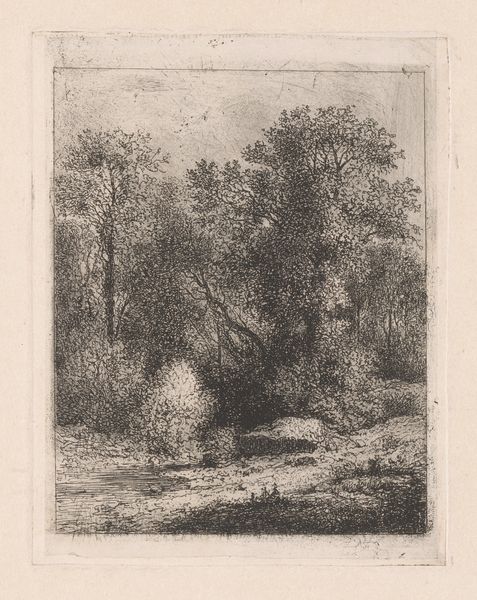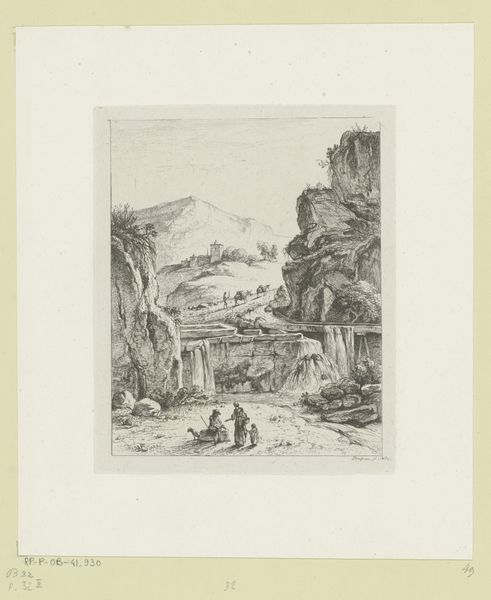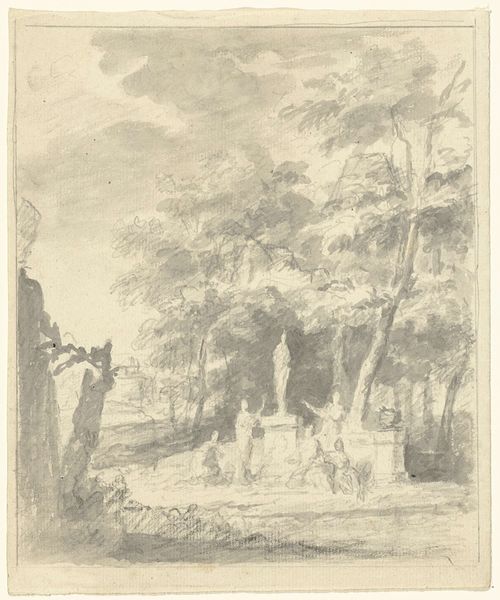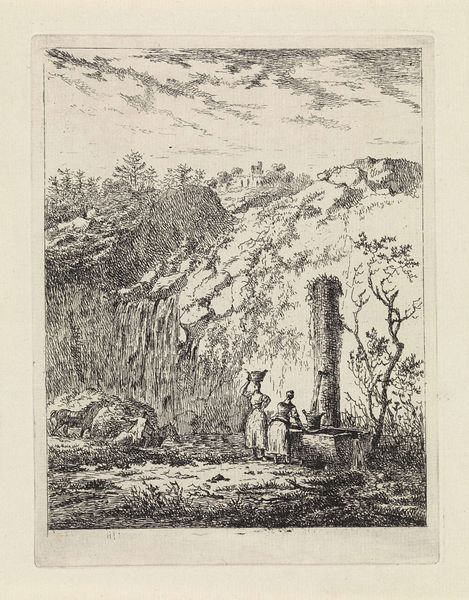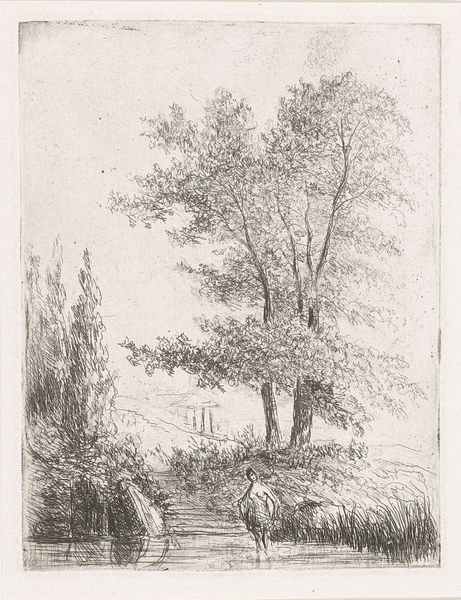
drawing, etching, ink, sculpture
#
landscape illustration sketch
#
drawing
#
statue
#
ink drawing
#
mechanical pen drawing
#
pen illustration
#
pen sketch
#
etching
#
pencil sketch
#
landscape
#
ink
#
ink drawing experimentation
#
sculpture
#
romanticism
#
pen-ink sketch
#
pen work
#
pencil art
Dimensions: height 172 mm, width 152 mm
Copyright: Rijks Museum: Open Domain
Curator: This is “Brug met standbeeld,” which roughly translates to “Bridge with Statue." It's an etching likely made with ink, and although the dating is broad, the artwork hails from somewhere between 1796 and 1856. Editor: There’s something melancholic about this little scene. The lines are so fine, almost like a memory fading. And the composition – a solitary statue overlooking a modest bridge, a ruined building. It has a poignant feeling. Curator: Notice the texture created by the etching. The artist, Reinierus Albertus Ludovicus baron van Isendoorn à Blois, uses varied line weights to depict light and shadow, and there is remarkable tonal depth achieved here with the limited means. This piece reveals a detailed, studied process of printmaking. Editor: The statue immediately brings to mind classical sculpture motifs – the idealized human form, even in this somewhat crude rendition. I see a protective figure there, a sort of guardian, placed at this pivotal crossing. There are echoes of religious iconography, perhaps a saint or Madonna. Curator: It's interesting to consider the consumption of prints like these. This would have been relatively accessible art, perhaps collected and kept in albums. It's a step away from unique artworks created for a privileged class, reaching a wider audience and shaping taste through reproduction. Editor: True. And thinking of that audience, consider the cultural landscape in which they encountered such images. Bridges are passages, transitions; and that ruin evokes nostalgia, perhaps a lament for a past that existed more strongly in art than it did in the current lived world of the time. Curator: A lot of romantic landscape artists at the time were trying to manufacture scenes of beauty in a Europe experiencing intense urban industrial growth. It’s striking how labor is not obviously present within the landscape—we are presented with a scene that foregrounds consumption, not production. Editor: In many ways it evokes the fragility of human presence within the natural world. Both bridge and castle represent ambition. Yet the scene implies time might wash them all away. Thank you for this subtle encounter, focusing on a range of suggestive cultural symbols. Curator: And thank you. Thinking of it materially emphasizes that artistic ideas often exist in parallel with specific tools, materials, and methods available to artists at any given moment in time.
Comments
No comments
Be the first to comment and join the conversation on the ultimate creative platform.
